We had all chosen different tours in Tunisia after being told we needed a visa to go ashore otherwise. Trish and Rex did the scenic drive, Anna and Philip the transfer to the city and we opted for the Best of Tunisia.
Our guide was Fati and he kept emphasising the religious acceptance in the city
. Most of the population is Suni Moslem but there are also some Christians and a smaller group of Jews. In the city there is a mosque, a synagogue (the oldest in Africa) and a cathedral (19th century) all close together. There is evidence of early man in the country 200 000 years ago. The country has 11 million people and Tunis is the largest city with 2 million people. 40% of the country is desert with the Berbers still living in the south.
We started with a stop at the ruins of the aqueduct that had bought water to Tunis in Roman times. It was originally long with parts as high as 60 feet, although it was much lower at the part we saw. We then went to Cathage to see the ruins of the 3rd biggest public baths in the roman Empire At the time the city had a population of 300 000 inhabitants and water was needed for drinking and cooking as well as to fill the baths. They carried 33 million litres of water a day for nearly 80km. This area was Province Africa and the breadbasket of Rome, providing grain for the Empire
.
The Berbers were the original inhabitants and then the Phoenicians founded Carthage in the ninth century BC. Since then the land has been occupied by the Romans, Vandals, Byzantines, Arabs and French. Often 1 group destroyed the work of the previous group, not always deliberately but by reusing blocks etc rather than quarrying to get new. Carthage is a very up-market area to live, with probably 60% of all the ruins believed by experts to be under various houses.
We had about an hour at the ruins of the public baths. Except for a tower with a part added to show the original height, all items on the site were original. The outline of the baths is known. The ruins were mainly of the under ground floor where the slaves would have burned olive wood to heat the water. There were hot, tepid and cool baths as well as steam rooms and a communal latrine. There was an outside 'sports' area as well as an inside gymnasium. The stones to build the baths came from an area 1 hour sail away
. There were broken columns and carved arches as well as the ruined walls.
We explored mainly on our own and found a small underground area. We were about to go in when we realised a guard with a machine gun was in the room. He came out a moment later and marched off looking very efficient but we think he was hiding out. Our guide later said that we would see a lot of police, usually in groups doing nothing. He suggested it was a way to hide unemployment. The local nickname for the police is Scorpions.
The Antinpus Baths were built when the area was called Province Africa. This was the breadbasket of Rome, known for its grain production. It was hard to believe we were in Africa when looking at the baths. Above the area we could see the flag at the Presidential palace – not the residence but the working area. Later we did drive past his residence but were told that no photos were allowed.
On the drive to the next stop we heard about the politics of the country. It is nominally a democracy with 5 parties – the ruling party and 4 opposition parties for decoration. There have been only 2 Presidents in the past 50 years. The present President has his photo everywhere and he looks about 35 although he is 70 plus. This tied in with what we had heard from the travel guide. She had said that the country is pro Western and this has stopped questions being asked about the political system
. I was surprised how open our guide was though.
He also said that in many ways the country has been and still is very progressive. Polygamy was banned in 1937, 60% of university students are woman and the headdress is forbidden for women who work in the public service. Arabic is the official language but French is compulsory at age 8 and English at 11. VAT is 18% and there is also income tax.
The Bardo Museum was amazing. It contains a wonderful collection of mosaics from around the country and other finds from Carthage. The main focus was the mosaics which were often works of art. There were some that were patterns but most were pictures, often representing myths. Fati was a real enthusiast and kept telling us we needed to come back and visit the sites that the mosaics had come from. They were originally flooring, in both private homes and public bathhouses, but are now displayed on walls. The pieces of marble were tiny which made the pictures very intricate. One was called ‘The Triumph of Neptune’ and it had Neptune in the centre with women and animals representing the seasons in the corners. There was one of Ulysses sailing past the sirens with his hands tied to a mast and his companions with wax in their ears. One was like a still life, with fruit, animals and birds in squares.
Fati said that the mosaics mainly date from the 3rd century AD
. They are 90% marble. They are moved in slabs, covered with burlap to protect the surface and sides. They are not all complete and in some cases a ‘picture’ has been drawn on the wall to fill in the spaces. It is easier to remake them now as they are photographed before removal. This museum has been operating for more than 100 years and is in a former Turkish Palace.
One unusual mosaic from the 4th century shows a schematic representation of a church. This room also had an old baptismal font and a mosaic dedicated to Christian martyrs. I always expect Roman items to be to do with the legends and forget the Empire lasted into the Christian period. One random piece of information was that the purple dye that the most important Romans were allowed to use on their togas came from the conch shell. Punic referred to this colour (I think).
We then drove into Tunis to the souks in the Medina. There is a 14th century wall which the French destroyed part of
. You can see a 9th century dome and mineret. We were told that a prayer in the mosque is the equivalent to 27 prayers at home and a prayer in Mecca is worth 100 000 prayers. The flag has 5 points representing the 5 pillars of Islam. There are 5 prayers per day and also the 5 pillars refer to Ramadan, daily prayer, visiting Mecca and 2 others which I have forgotten.
We were taken to a shop to see the view from the roof. There were mosaics on the roof and views of the various domes. On one side we could see the roof of the mosque, the synagogue and the Catholic Church.
The carpet demonstration was actually interesting. We were all given a glass of mint tea and a macaroon then shown rugs made of wool, camel hair and finally silk. The top rugs had 1 million knots per square metre. Some take over a year to make as they are made by hand and a woman will only work on them for 3-4 hours per day. They are made by eye so are all slightly different but often have the national flower, jasmine, olive designs and designs from the doors of the Medina.
We were encouraged to buy rugs and ceramics – I was not even tempted by the ceramics but did think the rugs were good value if you wanted one (which we didn’t). We didn’t go through the spice or perfume area of the souk which Anna and Philip did. They had booked the transfer only but in fact had a person who took them through the souk if they wished
. They were buzzing about this later.
We had lunch back near the aqueduct then went to the North Africa American Military Cemetery. There are 2841 US soldiers buried here and there are also other cemeteries with 8000 Germans, 6000 French and 8000 UK soldiers outside the city. The Visitors building also contains a Roman mosaic donated by the President of Tunisia.
We finished with a visit to the blue and white village, Sidi Bou Said. The traditional colours for the villages were green windows with yellow doors. In 1915 an English banker with a very multicultural background moved into the village and went for blue trim to reflect the sea. The whole village is now in these colours. We walked to the top and then had a coffee near where the bus left. Being a tourist place they were happy to accept Euros.
We heard a bit more about the country on the short drive back to the boat. The calendar has about 10 days less than the Gregorian calendar and so Ramadan is at a different time each year
. During this period there is no food, drink or sex from sunrise to sunset. It must be observed by all who are able to do so - this excludes children under 15, the sick, pregnant and breast feeding women. There were cactus with prickly pear, the bitter Seville oranges trees and a lot of Eucalyptus trees, which have been here for over 100 years.
We had a good catch up about the day. Philip and Anna had been to a carpet demonstration but at a different shop. The demonstrator there was also called Mohamed Ali, so we wondered if they all took that name for ease. Trish and Rex had also seen the cemetery. So this was our first and possibly last visit to Africa and unfortunately we have no geocache from there.
Out of Africa
Saturday, September 25, 2010
 La Goulette, Tunisia
La Goulette, Tunisia
Other Entries
-
114Wandering about Wexford
Sep 0817 days prior Ballymacaw, Irelandphoto_camera15videocam 0comment 0
Ballymacaw, Irelandphoto_camera15videocam 0comment 0 -
115The Rain of Kerry
Sep 0916 days prior Ballymacaw, Irelandphoto_camera5videocam 0comment 0
Ballymacaw, Irelandphoto_camera5videocam 0comment 0 -
116Nothin' much doin'
Sep 1015 days prior Ballymacaw, Irelandphoto_camera3videocam 0comment 0
Ballymacaw, Irelandphoto_camera3videocam 0comment 0 -
117A load of Blarney
Sep 1114 days prior Ballymacaw, Irelandphoto_camera15videocam 0comment 0
Ballymacaw, Irelandphoto_camera15videocam 0comment 0 -
118The products of Waterford
Sep 1213 days prior Ballymacaw, Irelandphoto_camera13videocam 0comment 0
Ballymacaw, Irelandphoto_camera13videocam 0comment 0 -
119Doin' Dublin
Sep 1312 days prior Ballymacaw, Irelandphoto_camera14videocam 0comment 1
Ballymacaw, Irelandphoto_camera14videocam 0comment 1 -
120Old fossils in Kilkenny
Sep 1411 days prior Ballymacaw, Irelandphoto_camera17videocam 0comment 0
Ballymacaw, Irelandphoto_camera17videocam 0comment 0 -
121Ciao Ballymacaw
Sep 1510 days prior Rome, Italyphoto_camera2videocam 0comment 0
Rome, Italyphoto_camera2videocam 0comment 0 -
122Cheers Bros
Sep 169 days prior Rome, Italyphoto_camera12videocam 0comment 0
Rome, Italyphoto_camera12videocam 0comment 0 -
123Roamin' Rome
Sep 178 days prior Rome, Italyphoto_camera8videocam 0comment 0
Rome, Italyphoto_camera8videocam 0comment 0 -
124All aboard please!!
Sep 187 days prior Civitavecchia, Italyphoto_camera8videocam 0comment 0
Civitavecchia, Italyphoto_camera8videocam 0comment 0 -
125Birthday on the Med
Sep 196 days prior Livorno, Italyphoto_camera38videocam 0comment 0
Livorno, Italyphoto_camera38videocam 0comment 0 -
126A lucky break at Monte Carlo...
Sep 205 days prior Monte-Carlo, Monacophoto_camera34videocam 0comment 3
Monte-Carlo, Monacophoto_camera34videocam 0comment 3 -
127The rain in Spain...
Sep 214 days prior Barcelona, Spain and Canary Islandsphoto_camera22videocam 0comment 0
Barcelona, Spain and Canary Islandsphoto_camera22videocam 0comment 0 -
128Getting into Gaudi
Sep 223 days prior Barcelona, Spain and Canary Islandsphoto_camera6videocam 0comment 0
Barcelona, Spain and Canary Islandsphoto_camera6videocam 0comment 0 -
129Meandering through Mallorca
Sep 232 days prior Mallorca, Spain and Canary Islandsphoto_camera5videocam 0comment 0
Mallorca, Spain and Canary Islandsphoto_camera5videocam 0comment 0 -
130A lazy day at sea
Sep 241 day prior Palma de Mallorca, Spain and Canary Islandsphoto_camera0videocam 0comment 0
Palma de Mallorca, Spain and Canary Islandsphoto_camera0videocam 0comment 0 -
131Out of Africa
Sep 25 La Goulette, Tunisiaphoto_camera9videocam 0comment 0
La Goulette, Tunisiaphoto_camera9videocam 0comment 0 -
132Lazy Sunday in Sicily
Sep 261 day later Trapani, Italyphoto_camera7videocam 0comment 0
Trapani, Italyphoto_camera7videocam 0comment 0 -
133Amazing Amalfi
Sep 272 days later Naples, Italyphoto_camera7videocam 0comment 0
Naples, Italyphoto_camera7videocam 0comment 0 -
134Rendezvous with Irene and Raewyn
Sep 283 days later Civitavecchia, Italyphoto_camera1videocam 0comment 1
Civitavecchia, Italyphoto_camera1videocam 0comment 1 -
135All at sea
Sep 294 days later Civitavecchia, Italyphoto_camera3videocam 0comment 1
Civitavecchia, Italyphoto_camera3videocam 0comment 1 -
136Hitting the Wall in Dubrovnik
Sep 305 days later Dubrovnik, Croatiaphoto_camera10videocam 0comment 1
Dubrovnik, Croatiaphoto_camera10videocam 0comment 1 -
137Checking out Corfu
Oct 016 days later Corfu Town, Greecephoto_camera6videocam 0comment 0
Corfu Town, Greecephoto_camera6videocam 0comment 0 -
138Lord of the Rings
Oct 027 days later Katákolon, Greecephoto_camera5videocam 0comment 1
Katákolon, Greecephoto_camera5videocam 0comment 1 -
139Stunning Santorini
Oct 038 days later Santorini, Greecephoto_camera10videocam 0comment 2
Santorini, Greecephoto_camera10videocam 0comment 2 -
140Effusing over Ephusus
Oct 049 days later Kusadasi, Turkeyphoto_camera6videocam 0comment 0
Kusadasi, Turkeyphoto_camera6videocam 0comment 0 -
141Striking out in Athens
Oct 0510 days later Athens, Greecephoto_camera5videocam 0comment 0
Athens, Greecephoto_camera5videocam 0comment 0 -
142Loungin' about
Oct 0611 days later Messina, Italyphoto_camera5videocam 0comment 3
Messina, Italyphoto_camera5videocam 0comment 3 -
143Walking on the Moon
Oct 0712 days later Messina, Italyphoto_camera6videocam 0comment 2
Messina, Italyphoto_camera6videocam 0comment 2 -
144Ciao Noordam, Bonjourno Roma
Oct 0813 days later Rome, Italyphoto_camera5videocam 0comment 0
Rome, Italyphoto_camera5videocam 0comment 0 -
145The Pope's place
Oct 0914 days later Rome, Italyphoto_camera8videocam 0comment 0
Rome, Italyphoto_camera8videocam 0comment 0 -
146Ciao Roma
Oct 1015 days later London, United Kingdomphoto_camera3videocam 0comment 0
London, United Kingdomphoto_camera3videocam 0comment 0 -
147Big wheel keep on turning...
Oct 1116 days later London, United Kingdomphoto_camera7videocam 0comment 0
London, United Kingdomphoto_camera7videocam 0comment 0 -
148Waxing lyrical
Oct 1217 days later London, United Kingdomphoto_camera3videocam 0comment 0
London, United Kingdomphoto_camera3videocam 0comment 0 -
149The 4 Seasons in one day
Oct 1318 days later London, United Kingdomphoto_camera3videocam 0comment 2
London, United Kingdomphoto_camera3videocam 0comment 2

 La Goulette, Tunisia
La Goulette, Tunisia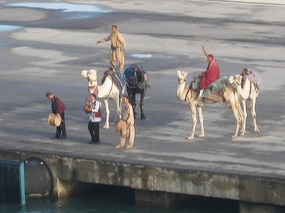
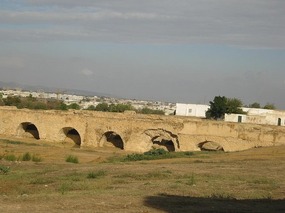
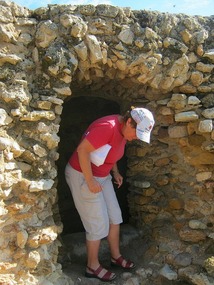
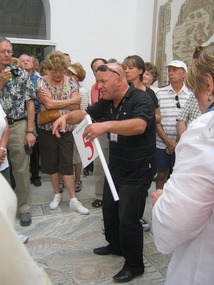
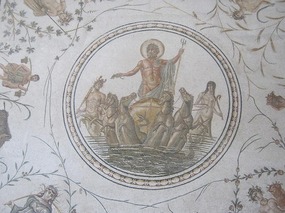
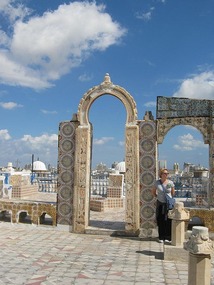
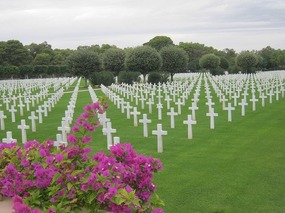
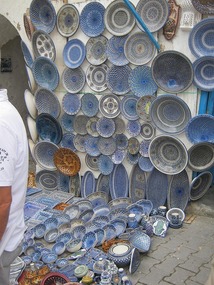









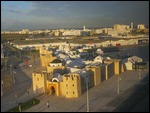
2025-05-22